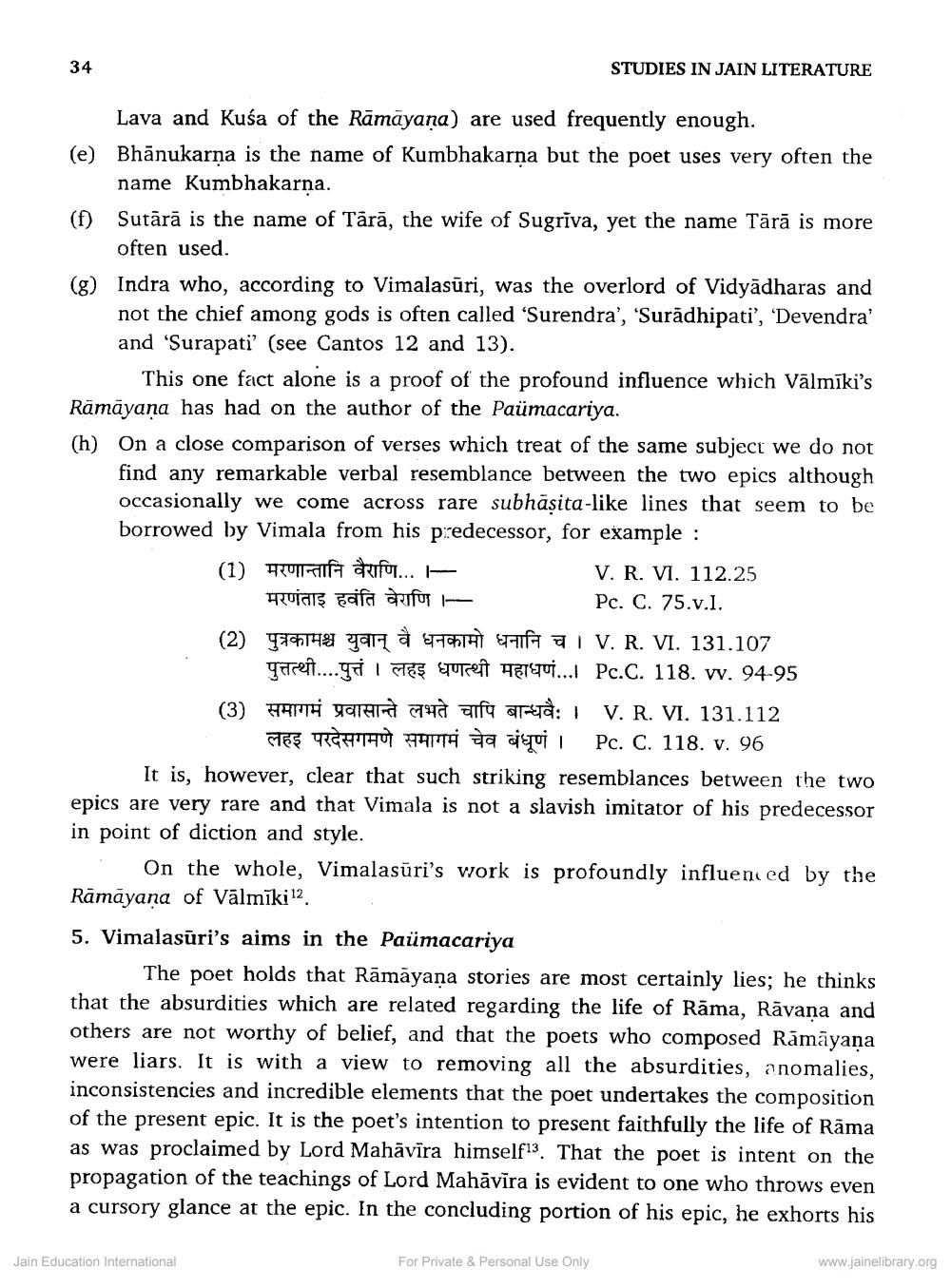________________
STUDIES IN JAIN LITERATURE
Lava and Kuśa of the Rāmāyana) are used frequently enough. (e) Bhānukarna is the name of Kumbhakarņa but the poet uses very often the
name Kumbhakarna. (f) Sutārā is the name of Tārā, the wife of Sugrīva, yet the name Tārā is more
often used. (g) Indra who, according to Vimalasūri, was the overlord of Vidyadharas and
not the chief among gods is often called 'Surendra', 'Surädhipati', 'Devendra' and 'Surapati' (see Cantos 12 and 13).
This one fact alone is a proof of the profound influence which Vālmīki's Rāmāyana has had on the author of the Paümacariya. (h) On a close comparison of verses which treat of the same subject we do not
find any remarkable verbal resemblance between the two epics although occasionally we come across rare subhasita-like lines that seem to be borrowed by Vimala from his predecessor, for example : (1) HUF fa... -
V. R. VI. 112.25 मरणंताइ हवंति वेराणि ।
Pc. C. 75.v.I. (2) Ecarta part à
E t hif a IV. R. VI. 131.107 Yerrent.... ga i des Etret PETETU.... Pc.C. 118. v. 94-95 (3) FATH JALAN and alfa antra: i V. R. VI. 131.112
MES TCH THU HAITI wa aliqui Pc. C. 118. v. 96 It is, however, clear that such striking resemblances between the two epics are very rare and that Vimala is not a slavish imitator of his predecessor in point of diction and style.
On the whole, Vimalasūri's work is profoundly influenı ed by the Rāmāyana of Vālmīki12.
5. Vimalasuri's aims in the Paümacariya
The poet holds that Rāmāyana stories are most certainly lies; he thinks that the absurdities which are related regarding the life of Rāma, Rāvana and others are not worthy of belief, and that the poets who composed Rāmāyana were liars. It is with a view to removing all the absurdities, anomalies, inconsistencies and incredible elements that the poet undertakes the composition of the present epic. It is the poet's intention to present faithfully the life of Rāma as was proclaimed by Lord Mahāvīra himself13. That the poet is intent on the propagation of the teachings of Lord Mahāvīra is evident to one who throws even a cursory glance at the epic. In the concluding portion of his epic, he exhorts his
Jain Education International
For Private & Personal Use Only
www.jainelibrary.org




